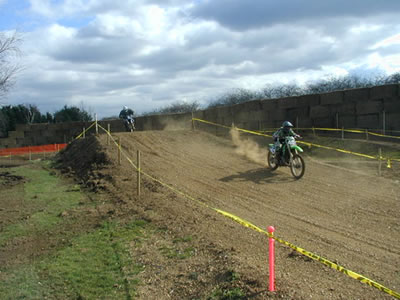Case Study
An arable farmer in the east of England benefited from ‘set aside’ grants to cease farming on a section of his land and to develop it (c 20 hectares) as a moto cross practice track, where young people could ride motor cycles around a circuit that was properly organised and supervised. The southern edge of this circuit was approximately 200 metres from the rear gardens of a row of six bungalows. Initially the moto cross circuit was used informally by the farmer’s son and his friends at weekends. But over time the popularity of the track grew and so the farmer sought to regularise its use as a motocross track by obtaining planning consent for it.

The council viewed the planning application favourably. They viewed the provision of leisure amenities as being worthwhile for the community and so granted planning consent subject to conditions restricting the use of the track to Saturdays between 11.00 hrs and 16.00 hrs, in addition to an aggregate of 8 weekdays between April to September.
The track soon became well established and well used as a practice circuit by local clubs. Two years after planning permission was granted some of the bungalows were sold to new owners. They complained to the council that the noise generated by motor cycles using the circuit at weekends was excessive. The local council monitored the noise from the circuit from the rear gardens of the bungalows and concluded that the noise amounted to a statutory nuisance. The council subsequently served an abatement notice on the landowner under the provisions of s. 80 of the Environmental Protection Act 1990 requiring him within a period of 90 days to:
“Abate the nuisance and to prohibit the recurrence of the same.”
The notice was appealed and David Horrocks was commissioned by the farmer to undertake an independent assessment of the noise levels. Additionally he scrutinised the measures that were being employed to minimise noise. He concluded that the noise did constitute a statutory nuisance and devised a comprehensive schedule of measures that would be effective in mitigating the noise impact of the circuit’s operations in accordance with best practicable means principles.
During a series of meetings with the council officers this schedule of measures was agreed and formed the basis of a works schedule to a varied abatement notice that was agreed by all parties. This meant that the original abatement notice could be withdrawn by the Council and replaced by an agreed notice.
The measures set down in the new abatement notice comprised the following:
- a maximum of nine Saturday moto cross meetings to be held within the period 1st April to 31st August and 1 month’s notice of these meetings to be given in writing to the council and local residents;
- all machines using the circuit to comply with static noise test limits stipulated in the Noise Council’s Code of Practice on Noise from Organised Off-Road Motor Cycle Sport, published in 1994, and measured in accordance with the protocol devised by the Auto-Cycle Union. Details of static noise tests performed during meetings to be logged in a format agreed with the council and such records to be provided to the council, on request;
- machine manufacturer’s silencers or better to be used on all machines and no machines with customised silencers to be allowed onto the circuit;
- the maximum number of machines allowed onto the circuit in any session shall be 30 and entry onto circuit shall be one machine at a time;
- a noise barrier to be erected along the southern aspect of the circuit as indicated on the scale drawing; this barrier to be a minimum of 5 metres in height and constructed using 500 kg bales of straw tightly abutted and linked together. These works to be completed within a period of 3 months and by 1st April each year a programme of repairs and maintenance of this barrier to be agreed with the council;
- the configuration of the circuit shall not be altered without the council’s express consent.
Following the implementation of this schedule of measures, no further complaints were received from the residents and hence a sustainable solution to this problem was achieved.
 We can provide the combination of both technical and legal services to clients from local authorities, business, industry and other organisations. View the services we offer.
We can provide the combination of both technical and legal services to clients from local authorities, business, industry and other organisations. View the services we offer. We have over 20 years experience running professional training events for environmental health professionals and lawyers for the CIEH, local authorities and industry.
We have over 20 years experience running professional training events for environmental health professionals and lawyers for the CIEH, local authorities and industry. View the latest news and information about matters related to Statutory Nuisance Solutions.
View the latest news and information about matters related to Statutory Nuisance Solutions.
